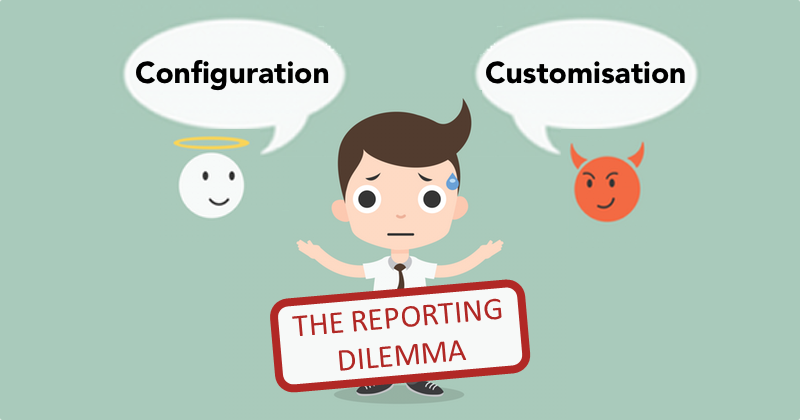The world of reporting and client communications and perhaps more specifically ‘client and fund reporting’ is undergoing a revolution. The old guard is being challenged as traditional report production thinking comes under pressure from a new approach and business model as highlighted by the recently published Investment Association – Fund Communication Guidance document.

Significantly, Reporting as a Service hits straight to the legacy heart of more traditional providers, simultaneously addressing the interwoven challenges of time, speed, cost, scale and flexibility.
The Gordian Knot is a legend of Phrygian Gordium often closely associated with Alexander the Great. It’s used as a metaphor for an intractable problem (disentangling an “impossible” knot) solved easily by creative lateral thinking (“cutting the Gordian Knot“) – Opus Nebula and its introduction of Reporting as a Service cuts the Gordian Knot of client reporting.
Historically, legacy systems have lent heavily on expensive (cost and time) ‘customisation’ as the only method of shaping a client solution. Opus Nebula’s refreshing alternative ‘configuration’ is now prominently ‘on the table’. Agreed, configuration may not be entirely original but when its delivered as part of a cloud-based reporting service using a market leading reporting platform at its core. Now we are talking revolution not evolution and investment firms prick up their collective ears.
The two terms ‘configuration’ and ‘customisation’ are often heard in client reporting circles. This article discusses the differences between the two terms, what they mean for a client reporting system and how each impact the reporting team. So why is “configuration” your friend while “customisation” is your enemy which should be avoided?
Both the customisation of the reporting system/reports and the configuration of the reporting system/reports are seeking to achieve the same result. Both terms represent ways that client reporting systems and/or client reports are configured or adapted to produce reporting output that matches the precise requirement of the client. The client maybe an internal department or an external fee paying customer.
1. Customisation
Customisation is the bespoke adaptation of the system and/or report to programme the particular feature for the particular client(s). This approach is typically time consuming as it involves the specification of the requirement, the design and build of the solution, as well as the testing and implementation of the new feature. Typically, each feature for each client will require a bespoke customisation. In the event other areas of the system may be updated in the future, all bespoke customisations would require review and may require additional work to maintain.
2. Configuration
Configuration can be used where the reporting system is flexible and the reports are dynamic in their creation, and the flexibility can be based on data. In this case, the reports can be configured to dynamically flex based on data items and simple rules. For example, client reports can be configured to produce individual reports for each client irrespective of the number of clients. The flexing of the reports is based on data items such as the type of client, items/tables or even pages can be included or excluded or modified depending on data items such as holdings within the portfolio, time periods etc. Similarly, with manager commentary, the texts can be automatically included, assembled and displayed on the page, depending on data within the system and not needing to be hard-wired or have a user manually select the items to be included.
Customisation of the system or the reports is often required for older, less flexible client reporting systems. The increased level of IT involvement in the customisation solution has a corresponding increase in time required to deliver the solution, as well as a corresponding increase in cost of the customisation solution and the level of user involvement and checking of the final report.
Configuration, on the other hand, allows the reports to automatically and dynamically flex and adjust depending on data. Thus, every report becomes entirely tailored to the client without a large cost and time overhead, whilst maintaining flexibility going forward.
So remember, configuration is your friend and customisation is your enemy if you are looking to run an efficient and effective client reporting function.
To learn how our Reporting as a Service solution can make your reporting function more efficient and effective please visit our website at www.opus-nebula.com and email [email protected] to arrange a meeting and see a live demonstration of the system.

